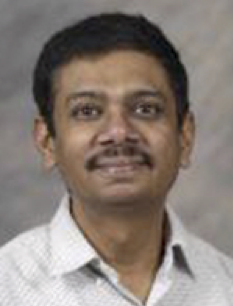Detection and analysis of wide-area resonant forced oscillation events in large power interconnections
There have been several recent widespread oscillation events in the eastern and western interconnections, and in Europe, which were caused by forced oscillations resonating with system modes. For instance, large MW oscillations were seen throughout the eastern interconnection on January 11, 2019, from a 0.25 Hz forced oscillation at a power plant in Florida. These events are related to the phenomenon of interarea resonance when a forced oscillation interacts with system interarea modes with close-by frequencies. The resonance effect can lead to long distance propagation of a forced oscillation, even when the associated system mode is well-damped, depending on the sensitivity of the source location of the forced oscillation. This talk will summarize the mathematical theory of interarea resonance based on linear system analysis and will present several signal processing algorithms for recognizing and analyzing such events online using synchrophasor measurements. The methodology will be illustrated on recent system oscillation events in the North American interconnections.
Date and Time
Location
Hosts
Registration
Speakers
 Prof. Mani V Venkatasubramanian of Washington State University
Prof. Mani V Venkatasubramanian of Washington State University
Detection and analysis of wide-area resonant forced oscillation events in large power interconnections
There have been several recent widespread oscillation events in the eastern and western interconnections, and in Europe, which were caused by forced oscillations resonating with system modes. For instance, large MW oscillations were seen throughout the eastern interconnection on January 11, 2019, from a 0.25 Hz forced oscillation at a power plant in Florida. These events are related to the phenomenon of interarea resonance when a forced oscillation interacts with system interarea modes with close-by frequencies. The resonance effect can lead to long distance propagation of a forced oscillation, even when the associated system mode is well-damped, depending on the sensitivity of the source location of the forced oscillation. This talk will summarize the mathematical theory of interarea resonance based on linear system analysis and will present several signal processing algorithms for recognizing and analyzing such events online using synchrophasor measurements. The methodology will be illustrated on recent system oscillation events in the North American interconnections.
Biography:
Mani V. Venkatasubramanian is a Boeing Distinguished Professor in Electrical Engineering at Washington State University (WSU), Pullman, WA. He also serves as the Director of Energy Systems Innovation Center (ESIC) at WSU. He received his M.S. and D.Sc. in Systems Science and Mathematics from Washington University, St.Louis, MO, and B.E. (Hons). In Electrical and Electronics Engineering from Birla Institute of Technology and Science, Pilani, India. He was an invited member of the working groups that studied the 1996 Western interconnection blackouts and the 2003 Northeastern blackout. He serves as the Chair of the IEEE PES Working Group on Power System Dynamic Measurements. He is a Fellow of IEEE.
Email:


 Add Event to Calendar
Add Event to Calendar